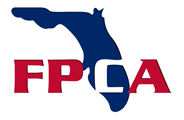Precast can be made into essentially any shape needed for a project.
This section addresses a few of the more common shapes or components that do not necessarily fit into one of the primary categories. Designers are encouraged to discuss a project with a precast producer early in the design process to best find ways to optimize the design.
Stadium Risers
Stadium risers are used to support seating in stadiums, arenas, theaters, and other types of grandstands. Typically, they are made as single, double, or triple risers with heights cast to satisfy site lines in the venue. Specifying single, double, or triple risers will depend on the layout and may be dictated by weights and crane access during construction.




